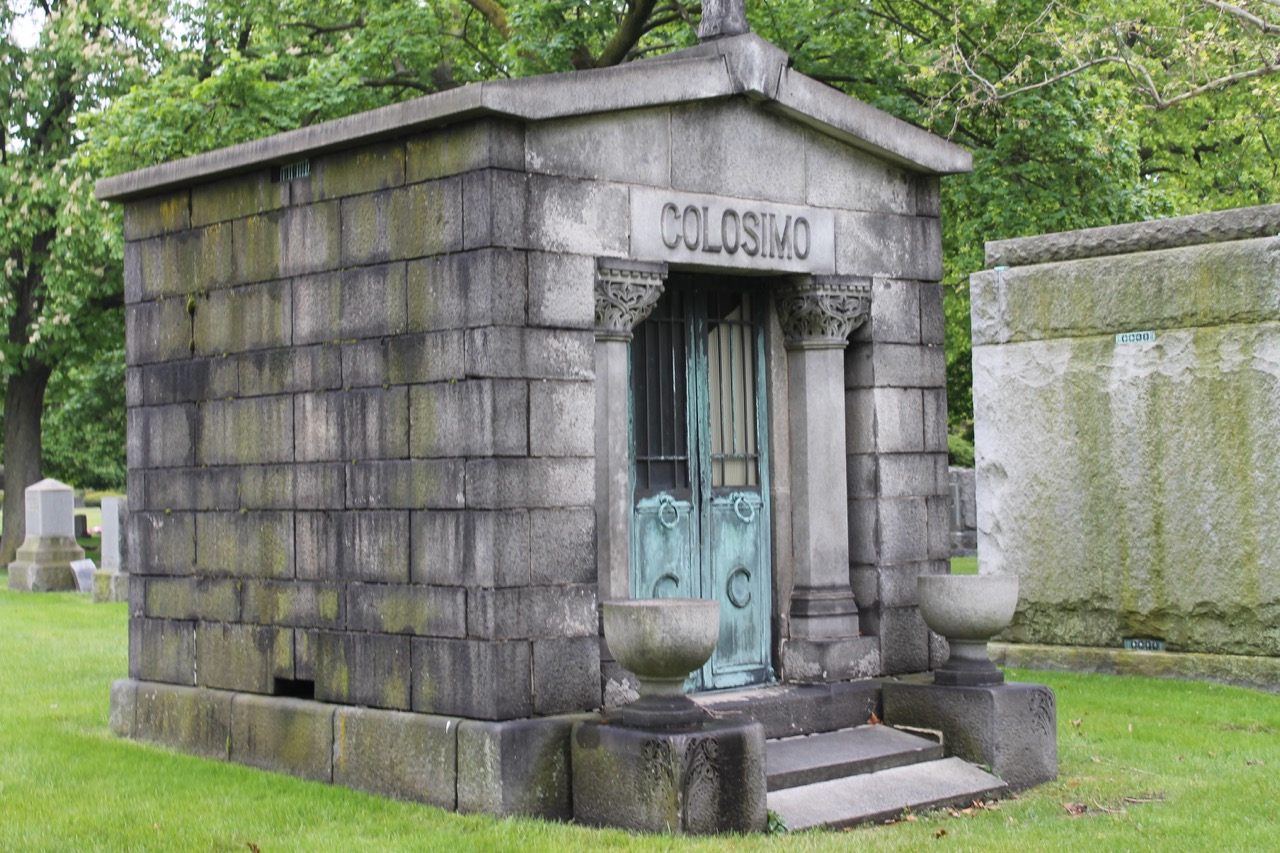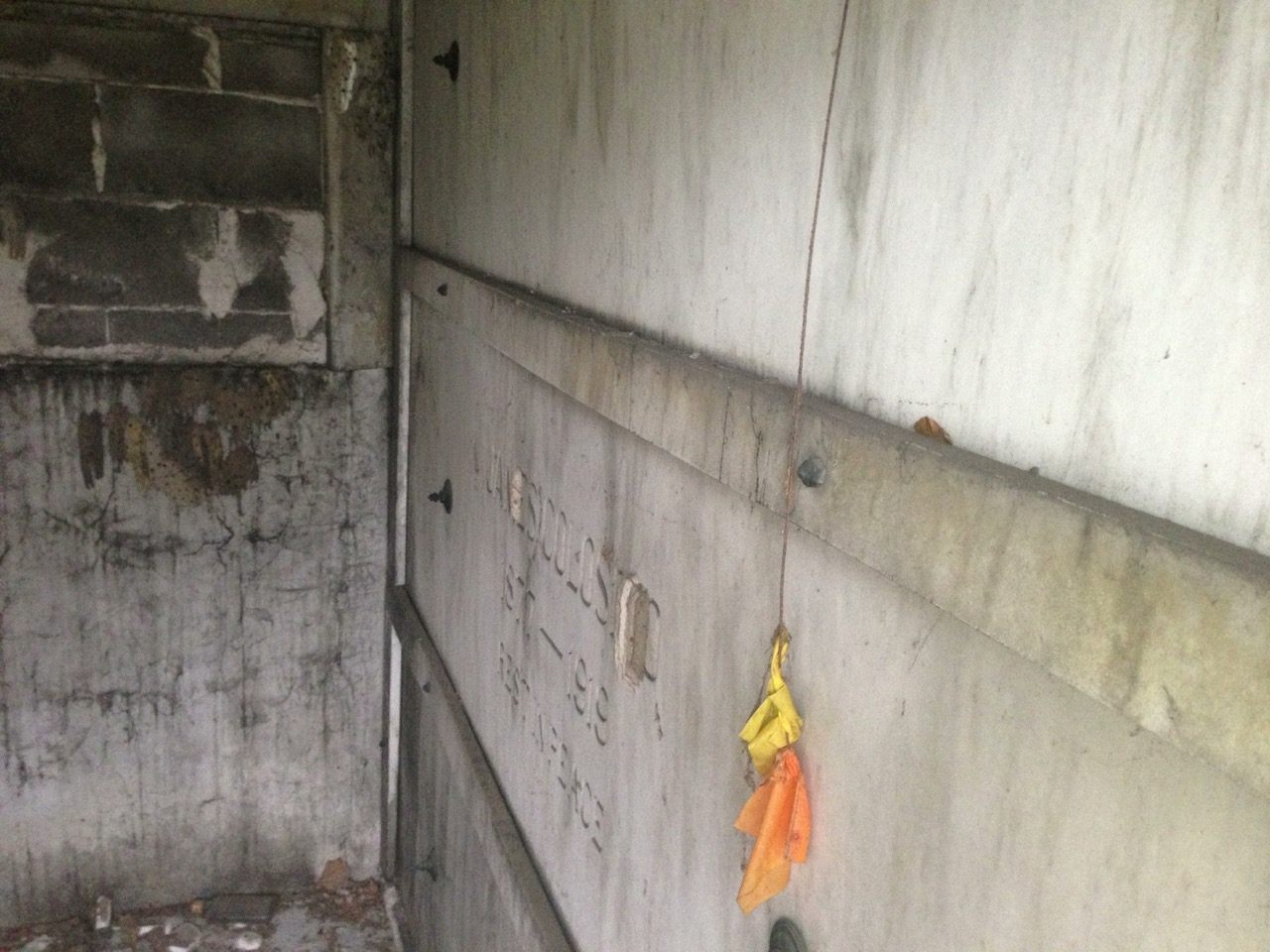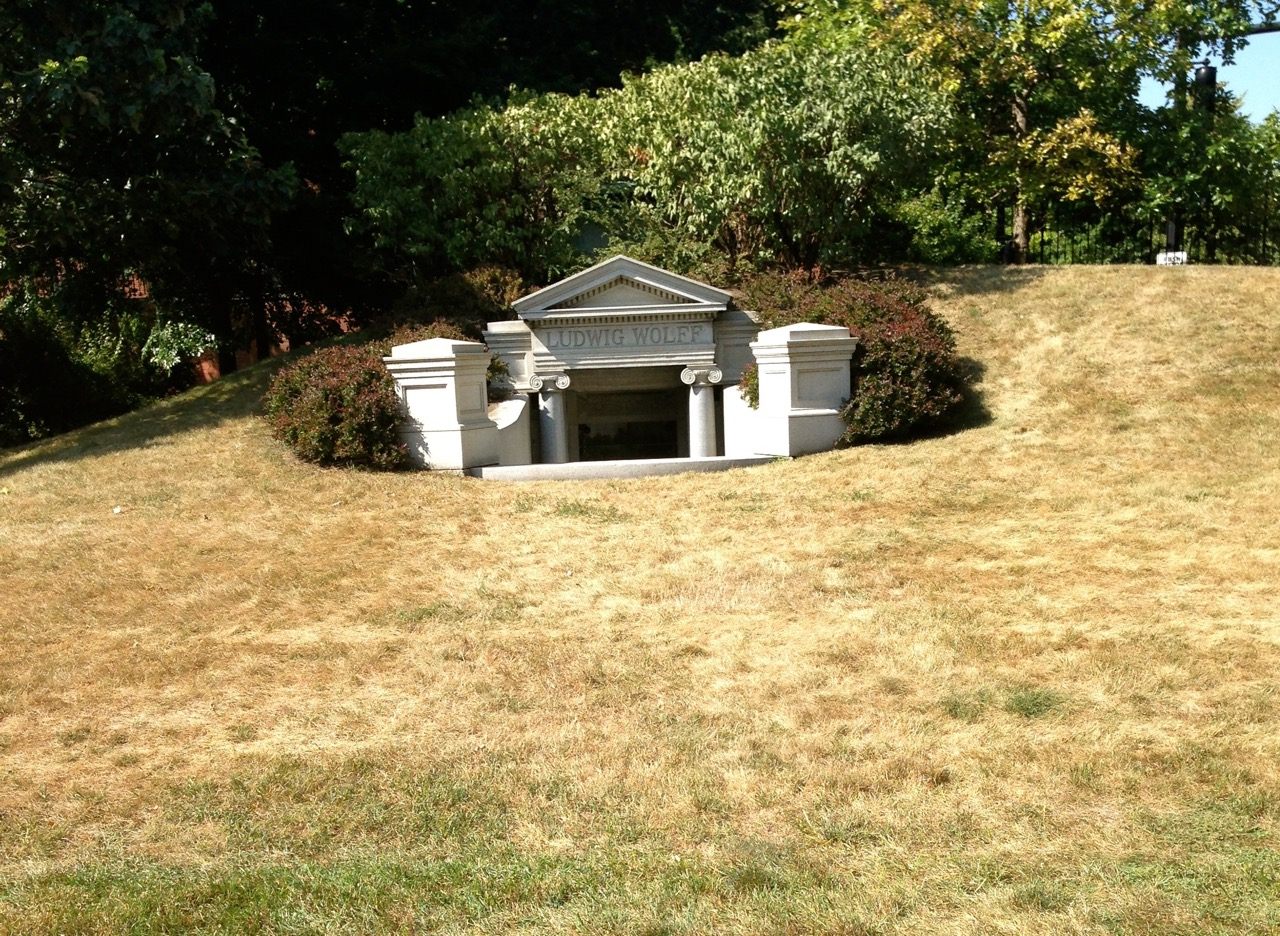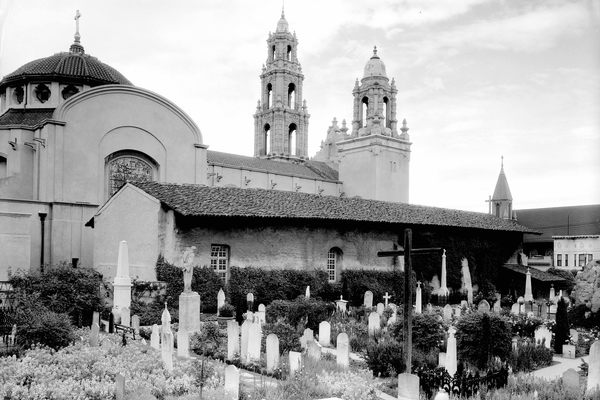Touring the Tombs: The Mysterious Mausoleums of Chicago’s Abandoned Cemeteries
Illinois Week on Atlas Obscura was created in partnership with Enjoy Illinois as part of the launch of the new Illinois Obscura Society. Sign up to find out more about the back room tours, unusual adventures, and incredible parties that Atlas Obscura will be putting on in Chicago and greater Illinois.

The Colosimo Tomb (Photo by Adam Selzer)
“Big Jim” Colosimo died in 1920. There was never any doubt about that. The pre-prohibition-era vice lord and power broker was shot to death in his own restaurant on May 11 of that year, and taken to his tomb in Oak Wood Cemetery in a solid bronze casket during a ceremony attended by politicians with names like “Hinky Dink” Kenna, “Bathhouse John” Coughlin, and “Diamond Joe” Esposito. We still don’t know who shot him, but we know that it was in 1920. That much, at least, is sure. We even have the newspaper articles and a death certificate. But a few years back, someone tried to break into his vault at Oak Woods, perhaps thinking that a solid bronze casket would fetch a pretty penny down at the scrap metal yard. They never made it past the front door, but damaged it enough to give curious onlookers a peek inside the tomb, where the solitary slab held a curious year of death, “JAMES COLOSIMO: 1877-1919.”

Inside the Colosimo Tomb (Photo by Adam Selzer)
1919? Typos on graves are not nearly as uncommon as one might think. Exactly why there was one on such a high-profile headstone as Colosimo’s isn’t known, but its not impossible to imagine the guy carving the letters on the slab was still writing “1919” on his checks half the time, and figured no one would ever see. But nearly a century later, people saw it and the tomb went from being simply a historic one to a fascinating example of human error preserved through time.
I was terrified of cemeteries as a kid - I often joke that I really did my part to push global warming along as teenager, since they still freaked me out so much that I’d drive far, far out of my way to keep from going past one. I finally went into one in college when someone told me that there was a waterslide in the middle of the one in Carrollton, Georgia (no phobia is worth missing a graveyard waterslide), and I came to learn just how fascinating a cemetery safari can be. Everywhere you look, there’s another mystery to solve. Why did someone want an Egyptian-style tomb in Illinois? What’s that place like on the inside? What’s with that cryptic epitaph? What sort of family has a rotating monument built for their family plot? One quick trip to a cemetery today can give me enough research topics to last a month.
Chicago cemeteries are replete with fantastic tombs, but one of the most tantalizing mini-mausoleum in town isn’t even in a cemetery at all, at least not officially. Our city is home to some 60 or 70 “abandoned cemeteries,” some of which still contain the remains of tens of thousands of people. The old City Cemetery that stood where Lincoln Park is now, between North Avenue and Fullerton, was far from the largest, but it’s the one you’re most likely to wander through without realizing that you’re walking through an old burial ground. Every day, countless Chicagoans pass right by a small stone structure in the park and don’t notice it - if they glance at it, they assume it’s a tool shed or something. But it’s a tomb - the oldest extant structure in the north Chicago Fire zone.
This tomb at the south end of Lincoln Park was built 1858 for Ira Couch, a hotel owner who had died in Cuba the year before, at a cost of $7000 (in 1850s money, when a dollar a day was decent pay). Most of the other above-ground tombs were removed shortly after the cemetery was closed in the 1860s, but, for reasons not entirely clear, the Couch mausoleum remained.

The Couch Mausoleum (Photo by Adam Selzer)
Exactly what’s inside of that tomb has been one of the city’s most tantalizing mysteries; as of 1911, Ira’s grandson estimated that there were about eight people in the tomb, and insisted that the bodies had never been moved. That year, in 1911, a rumor that it was going to be opened attracted a huge crowd, and a city official tried to quiet people by saying he’d been inside of it in 1901 and seen no bodies. But no record of it being opened since the 1860s has ever been found, and the door is sealed shut. By sliding an iPhone taped to a wire hanger under the door I was able to get a shot of the inside, but the only thing behind the door is another door.

Inside the Couch Tomb (Photo by Adam Selzer)
There are plenty of other tombs in town that are just as fascinating. In Graceland Cemetery, there are two tombs designed by Louis Sullivan, one of the most notable architects of the “Chicago School” of design. In 1889, he designed the Egyptian Revival Ryerson Tomb for a lumber baron, and the attention it created got him the commission for the tomb of Carrie Eliza Getty the next year. The Ryerson tomb is neat, but the Getty may be the single most perfect example of Sullivan’s architectural style still standing. Frank Lloyd Wright referred to the tomb as “a piece of sculpture, a statue, a great poem,” and it became a city landmark in 1971. I’ve never found anything showing quite what it’s like on the inside; it’s last known to have been opened in 1946, when Carrie’s daughter Alice, a noted composer and scholar of Buddhist iconography, was interred there. Even paperwork from the landmarking process note that the interior is something of a mystery.

Getty Tomb (Louis Sullivan, 1890) Photo by Eric Allix Rogers from Flickr. Creative Commons Some Rights Reserved

The Wolff Tomb (Photo by Adam Selzer)
Just north of the Getty Vault stands the tomb of plumbing supply magnate Ludwig Wolff, which is carved into a hill with a staircase leading underground - and it’s also said to be haunted. Though it’s not one of the more widely-believed ghost stories in town, some say that the tomb is guarded by some sort of green-eyed ghoul whose voice can be heard if you press your ear to the door. People who claim to hear it are probably just hearing brakes squealing on nearby Montrose Avenue.
Further west, in Rose Hill Cemetery, stands a massive marble column that serves as the Harris tomb of the Harris bank fortune. When one peeks into the door, all one sees is a giant pit with a ladder leading down into the ground.

The pit in the Harris tomb
Last but hardly least among the great Chicago tombs is a crypt found in the main mausoleum at Rose Hill sit several small chairs with fish designs carved into them - the first sign that you’re standing before the crypt of John G. Shedd, who lent his name to the Shedd Aquarium. The doors to the crypt are kept unlocked, so one can walk right in. And it’s a heck of a crypt, crowned by a massive stained glass window designed by the Tiffany company. When the sun is just right, the whole crypt is bathed in blue light, giving the whole crypt an appropriately “underwater” vibe.

The aquatic Shedd window
What’s most fascinating about the window is the design - featuring a guy in a hooded robe holding a sword, and with a large key dangling around his neck - the image looks like something from the back of Led Zeppelin IV. Often, odd symbols like this on tombs turn out to be symbols of some group like the Freemasons, the Order of Oddfellows, or the like, but no one I’ve ever spoken to has ever been able to tell me what the significance of the guy in the hooded robe was - only that Shedd wanted something truly unique.
Of course these are only a sampling; Graceland, Rose Hill, and Oak Woods are all open to the public, and it’s impossible to wander in any of them for long without finding something fascinating to admire, or some new mystery to solve.
Illinois Week on Atlas Obscura was created in partnership with Enjoy Illinois as part of the launch of the new Illinois Obscura Society. Sign up to find out more about the back room tours, unusual adventures, and incredible parties that Atlas Obscura will be putting on in Chicago and greater Illinois.



















Follow us on Twitter to get the latest on the world's hidden wonders.
Like us on Facebook to get the latest on the world's hidden wonders.
Follow us on Twitter Like us on Facebook